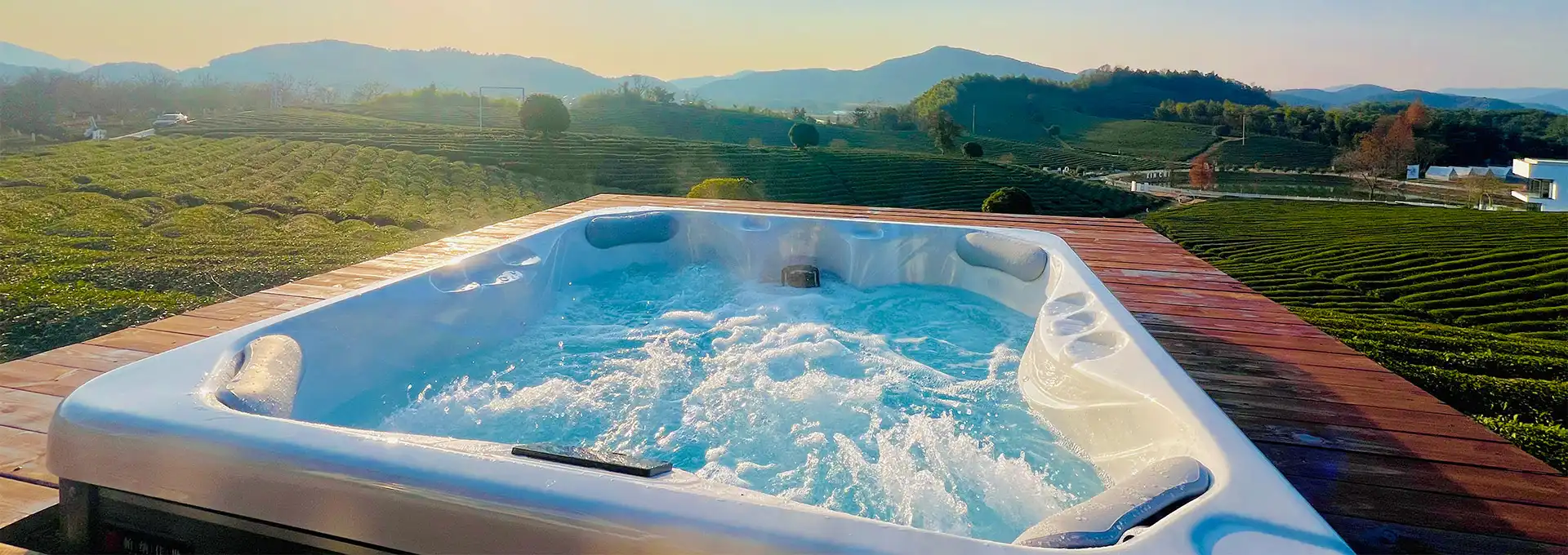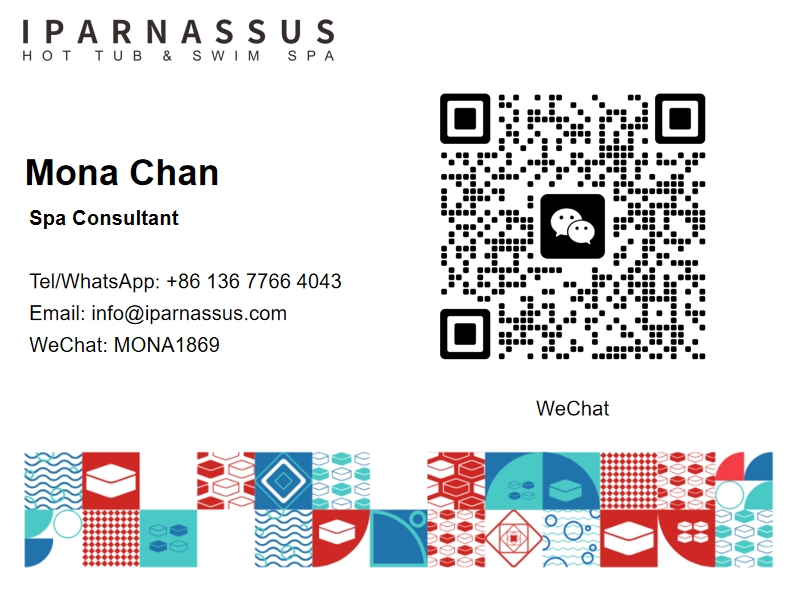The Science Behind Plunge Cold Tub Recovery
2025-07-25 17:49:38
Understanding the scientific mechanisms that drive recovery through cold water immersion has become increasingly crucial for athletes, fitness enthusiasts, and health-conscious individuals seeking evidence-based wellness solutions. The science behind Plunge Cold Tub recovery encompasses a complex interplay of physiological responses that include vasoconstriction, neurochemical adaptation, and inflammatory modulation. These mechanisms work synergistically to accelerate muscle recovery, reduce exercise-induced inflammation, and enhance overall physical performance. Modern research reveals that the therapeutic benefits of a Plunge Cold Tub extend far beyond simple temperature exposure, involving sophisticated cardiovascular, neurological, and metabolic adaptations that contribute to optimal recovery outcomes.
What Physiological Changes Occur During Plunge Cold Tub Recovery?
Vascular Response and Circulation Enhancement
The immediate physiological response to Plunge Cold Tub immersion begins with dramatic changes in the cardiovascular system that serve as the foundation for recovery benefits. Cold water causes vasoconstriction, which restricts blood flow, slows nerve signaling and reduces swelling, all of which may turn down the volume of pain. This vasoconstriction response occurs rapidly upon entry into the Plunge Cold Tub, causing peripheral blood vessels to constrict and redirecting blood flow toward vital organs. The subsequent warming phase triggers vasodilation, creating a powerful pumping effect that enhances circulation and promotes the delivery of fresh nutrients while facilitating the removal of metabolic waste products. This vascular response cycle is particularly beneficial for muscle recovery as it helps flush out accumulated lactate and other byproducts of intense exercise. The enhanced circulation also supports the delivery of oxygen and essential nutrients to damaged muscle tissues, accelerating the natural healing process.
Neurochemical Adaptations and Stress Response
Plunge Cold Tub exposure triggers profound neurochemical changes that contribute significantly to recovery and overall well-being through the activation of the sympathetic nervous system. One study showed that a cold plunge at 57°F caused a 250% increase in dopamine levels, and a 530% increase in noradrenaline levels that lasted for several hours. These neurochemical adaptations represent a sophisticated stress response that ultimately strengthens the body's resilience mechanisms. The release of norepinephrine during Plunge Cold Tub sessions not only enhances alertness and focus but also plays a crucial role in pain modulation and inflammation control. Additionally, the sustained elevation of dopamine levels following cold exposure contributes to improved mood, motivation, and overall sense of well-being, creating a positive feedback loop that encourages consistent recovery practices and enhances the overall training experience.
Inflammatory Modulation and Tissue Repair
The anti-inflammatory effects of Plunge Cold Tub therapy represent one of the most well-documented physiological changes that directly impact recovery outcomes. Cold plunge therapy, or taking an ice bath, combats these issues by constricting blood vessels, reducing swelling, and flushing out waste products from your muscles. The controlled inflammatory response triggered by cold exposure helps regulate the body's natural healing processes without completely suppressing the beneficial aspects of exercise-induced inflammation. This delicate balance allows for optimal tissue repair while minimizing excessive inflammation that could prolong recovery time. The Plunge Cold Tub's ability to modulate inflammatory markers such as creatine kinase and various cytokines creates an environment conducive to faster healing and reduced muscle damage, ultimately supporting more consistent training and improved long-term performance adaptations.
How Does Plunge Cold Tub Recovery Affect Muscle Repair and Growth?
Protein Synthesis and Cellular Recovery Mechanisms
The impact of Plunge Cold Tub therapy on muscle repair involves complex cellular mechanisms that influence protein synthesis and overall muscle adaptation processes. A recent study showed that cold plunges are effective in reducing inflammation and delayed onset muscle soreness (DOMS). The controlled stress imposed by cold exposure activates cellular defense mechanisms that enhance the muscle's ability to repair micro-damage caused by intense exercise. However, the timing of Plunge Cold Tub use becomes critical when considering muscle growth objectives, as immediate post-exercise cold exposure may interfere with the natural inflammatory processes necessary for optimal hypertrophy. The cellular responses to cold therapy include enhanced mitochondrial function, improved cellular energy production, and activation of various heat shock proteins that contribute to cellular resilience and adaptation capacity.
Exercise-Induced Muscle Damage Recovery
Plunge Cold Tub therapy demonstrates remarkable effectiveness in accelerating recovery from exercise-induced muscle damage through multiple pathways that support tissue restoration. Biomarkers for muscle tissue damage (creatine-kinase) were also shown to be improved after a cold plunge. The reduction in muscle damage markers indicates that cold water immersion helps preserve muscle integrity during the recovery phase, allowing for faster return to baseline function. This preservation of muscle tissue is particularly valuable for athletes engaged in high-frequency training or competition schedules where rapid recovery is essential. The Plunge Cold Tub's ability to minimize secondary muscle damage that can occur during the inflammatory phase of recovery helps maintain training consistency and reduces the risk of overuse injuries that commonly result from inadequate recovery between sessions.
Strength and Power Recovery Optimization
The relationship between Plunge Cold Tub recovery and strength/power restoration involves nuanced physiological adaptations that can significantly impact subsequent training sessions. Subjects in the study were split into two groups and performed a high intensity workout. One group finished the workout with a cold plunge while the other did not. Research consistently demonstrates that appropriate use of cold water immersion can enhance the recovery of maximal strength and power output, particularly when sessions are separated by 24-48 hours. The Plunge Cold Tub's influence on neuromuscular function extends beyond simple muscle recovery to include improvements in motor unit recruitment and neural drive, which are crucial components of strength and power expression. However, the timing and frequency of cold exposure must be carefully managed to avoid potential interference with long-term strength adaptations, making strategic implementation essential for optimal results.
What Role Does Temperature Play in Plunge Cold Tub Recovery Effectiveness?
Optimal Temperature Ranges for Recovery Benefits
The therapeutic effectiveness of Plunge Cold Tub recovery is intricately linked to the specific temperature ranges used during immersion, with research identifying optimal parameters for various recovery objectives. Water should be 50 F or colder. Keep in mind that the water in a frozen lake will be much colder. The temperature range between 50-60°F (10-15°C) appears to provide the ideal balance between therapeutic benefit and safety for most individuals seeking recovery enhancement. Lower temperatures within this range tend to produce more pronounced physiological responses, including greater vasoconstriction, enhanced neurochemical release, and more significant inflammatory modulation. However, the relationship between temperature and recovery outcomes is not linear, and excessively cold temperatures may actually impair recovery by causing excessive stress or tissue damage. The Plunge Cold Tub's ability to maintain precise temperature control allows users to optimize their exposure based on individual tolerance, experience level, and specific recovery goals.
Temperature-Dependent Physiological Thresholds
Different temperature ranges within the Plunge Cold Tub spectrum activate distinct physiological thresholds that contribute to varying aspects of the recovery process. The vasoconstriction of the peripheral blood vessels sets in at an estimated core temperature of 37.1°C when immersed in cold water. Understanding these temperature-dependent thresholds allows for strategic manipulation of cold exposure to target specific recovery outcomes. Temperatures closer to 60°F may be more appropriate for individuals focused on mild recovery enhancement and adaptation, while temperatures approaching 50°F deliver more intensive therapeutic effects suitable for serious athletes or during periods of high training stress. The Plunge Cold Tub's precise temperature control enables users to progressively adapt to colder exposures while maintaining safety and maximizing therapeutic benefit.
Individual Adaptation and Temperature Progression
The effectiveness of Plunge Cold Tub recovery varies significantly among individuals based on factors including cold adaptation, body composition, and previous exposure history. In cold-adapted winter swimmers, cold thermogenesis is solely related to changes in rectal temperature, indicating the predominance of the central temperature input in activation of heat production mechanisms. This individual variability necessitates a personalized approach to temperature selection and progression within the Plunge Cold Tub protocol. Beginners should start with milder temperatures and shorter durations, gradually progressing to more challenging exposures as their physiological adaptation develops. Advanced users may benefit from varying temperature protocols to continue challenging their adaptive mechanisms and maximizing recovery benefits. The key lies in finding the optimal temperature that produces therapeutic effects without causing excessive stress or compromising safety.
Conclusion
The science behind Plunge Cold Tub recovery reveals a sophisticated interplay of physiological mechanisms that collectively enhance muscle repair, reduce inflammation, and optimize performance outcomes. Through strategic temperature management and proper timing, cold water immersion therapy offers evidence-based benefits that can significantly improve recovery efficiency and training consistency for athletes and fitness enthusiasts alike.
Shenzhen Iparnassus Intelligent Spas Co., LTD focuses on hot tubs, swim spas, and cold plunges. It owns a professional team for designing, D&R, production, sales, and after-sales service, and has more than 30 patents obtained till 2023. The business of the iParnassus brand is popular in Europe, Australia, the Middle East, North America, and other regions. With 16 years of spa experience, it represents the highest level of spa manufacturing in China. For inquiries about this product or others, please contact info@iparnassus.com for dedicated service.
References
1. Machado, A. F., et al. (2016). Can water temperature and immersion time influence the effect of cold water immersion on muscle soreness? A systematic review and meta-analysis. Sports Medicine, 46(4), 503-514.
2. Roberts, L. A., et al. (2015). Post-exercise cold water immersion attenuates acute anabolic signalling and long-term adaptations in muscle to strength training. Journal of Physiology, 593(18), 4285-4301.
3. Bleakley, C., et al. (2012). Cold-water immersion (cryotherapy) for preventing and treating muscle soreness after exercise. Cochrane Database of Systematic Reviews, 2, CD008262.
4. Poppendieck, W., et al. (2013). Cooling and performance recovery of trained athletes: a meta-analytical review. International Journal of Sports Physiology and Performance, 8(3), 227-242.
5. Tipton, M. J., et al. (2017). Cold water immersion: kill or cure? Experimental Physiology, 102(11), 1335-1355.
6. Castellani, J. W., & Young, A. J. (2016). Human physiological responses to cold exposure: Acute responses and acclimatization to prolonged exposure. Autonomic Neuroscience, 196, 63-74.



